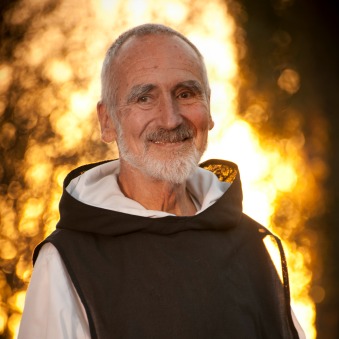Q: Why do religions so often go wrong and veer away from essentials like reverence, gratitude, and love? — Andy L., London, England
A: That’s an excellent question: What happens to make most religions go sour? And why do you have to make such an effort to get to the religious core of them? Even if you are absolutely delighted with a particular religious tradition, you may see terrible things connected with it. Not only in the past, but also in the present. And left and right.
The moment you have doctrine, the doctrine will express itself in some way or other: in some statement, teaching, word, or letter. The moment you express your experience, this fresh and new teaching begins to live its own life, in a book, on a tablet, in oral tradition. It sits out there. It’s objective. And now the first generation interprets that religious experience.
Take the tradition of Christianity, interpreting Jesus’ own religious awareness. He just lived and talked about it, and it was contagious; people flocked to him. The people nearest to him interpreted his understanding, and then the next ones interpreted the interpretation. And the next ones interpreted an interpretation of an interpretation. Well, once you get down 2000 years, you find layer upon layer upon layer of interpretation. It gets difficult to come through to the very core, you see, to that which originally gave it life.
I compare this process to a volcanic eruption, like Mt. St. Helens. The top flies off, and out comes this lava: light, hot, and alive, or seemingly alive. That’s how it happens in a “big bang” religious experience. At that first moment it’s beautiful, awe inspiring. Then the lava starts flowing down the side of the mountain. The further it flows, the thicker it gets, layer upon layer. The colder it gets. Even further down, it looks like just a big slab of rock. You would never recognize that this was once hot lava shooting out from the innards of the earth. So when you come to a later stage of a religion, you find that the accumulated doctrine has often become pretty thick and impenetrable.
And then come the great teachers, the great saints in that particular tradition. What do they do? They push through this thick layer, and out gushes the live religious experience again. And it looks so much like the original one. The more fervently it’s done, the more it looks like the original.
Most people love St. Francis. They may not even be Christians, but they love St. Francis, because he did just that. Twelve hundred years after Jesus, Christianity was crusted with thick layers. It was a pretty sad time in many respects. And St. Francis came and pushed right through to the original experience. He even began to look like Jesus; he had even the stigmata all of a sudden. This man relived the whole thing.
But, of course, you don’t have to wait for a St. Francis. Each one of us is called to do just that. Because, left to itself, religion has a built-in mechanism of becoming irreligious. So each one of us has the responsibility to make our religion religious.
— Your Brother David



Comments are now closed on this page. We invite you to join the conversation in our new community space. We hope to see you there!